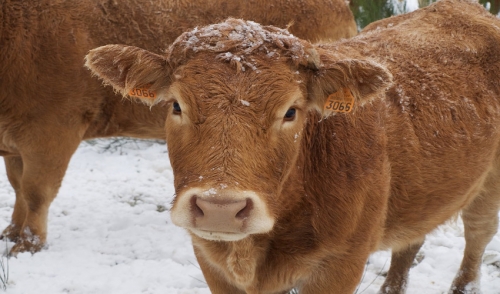
Protecting Your Livestock from the Harsh Winter
Winter is a dangerous season for livestock and can be devastating to farmers, whether you have just a few hobby animals or a large commercial operation. Fortunately, there are many ways to keep livestock safe and healthy even through the worst winter conditions. By meeting your animals' needs, you can feel confident that your livestock will weather any winter storm successfully.
- Health: Healthy animals are better able to withstand harsh winter conditions. In the fall, any livestock health problems should be addressed, and animals should be monitored closely through the fall and winter for any new problems that may develop. Familiarize yourself with the signs of hypothermia and frostbite that could affect your animals, and be ready to get them prompt veterinary attention if they show any signs of distress. Pregnant stock should be watched especially closely so they do not suffer any ill effects during poor weather.
- Food: An adequate, nutritious diet is an ideal defense against problems caused by winter weather. Animals need more calories to maintain their body heat when temperatures plummet, and adding sufficient roughage or grain to their diet can help them stay at good weights. Trace minerals should be incorporated into their winter diet, as well as vitamin supplements if necessary. Monitor feeding times to be sure all animals are eating appropriately and have good access to the proper food.
- Water: Access to ice and snow during harsh weather does not remove the need for fresh, clean, liquid water for all livestock. Eating snow or ice for moisture will lower an animal's body temperature and make them more susceptible to hypothermia and illness. Water should be offered at 37 degrees Fahrenheit or higher (3 degrees Celsius or higher), and heated water tanks or supplemental heaters should be inspected regularly to be sure they are functioning appropriately to provide water.
- Shelter: While animals of all types are well equipped to survive even severe storms, providing good shelter can minimize the risk of any problems. Barns and coops should be winterized properly to remove drafts without blocking all ventilation, and additional shelter can be provided with windbreaks in fields or pens. Enough shelter should be available so all animals can be accommodated without overcrowding, and extra bedding can also help insulate the livestock and keep animals more comfortable as temperatures drop.
- Storm Preparation: No matter how many or how few animals you have, it is critical to be prepared to meet their needs during any extended storm. Keep an adequate supply of both water and food on hand in case it is impossible to get additional supplies for several days, and have emergency information for different suppliers available in case extra is needed. When a storm threatens, move livestock inside if possible, or make extra shelter and food available so they can be prepared for the poor weather.
A harsh winter can be deadly for livestock, but if you are prepared to meet your animals' needs throughout the coldest months, you and your livestock can safely weather any storms the winter brings.
